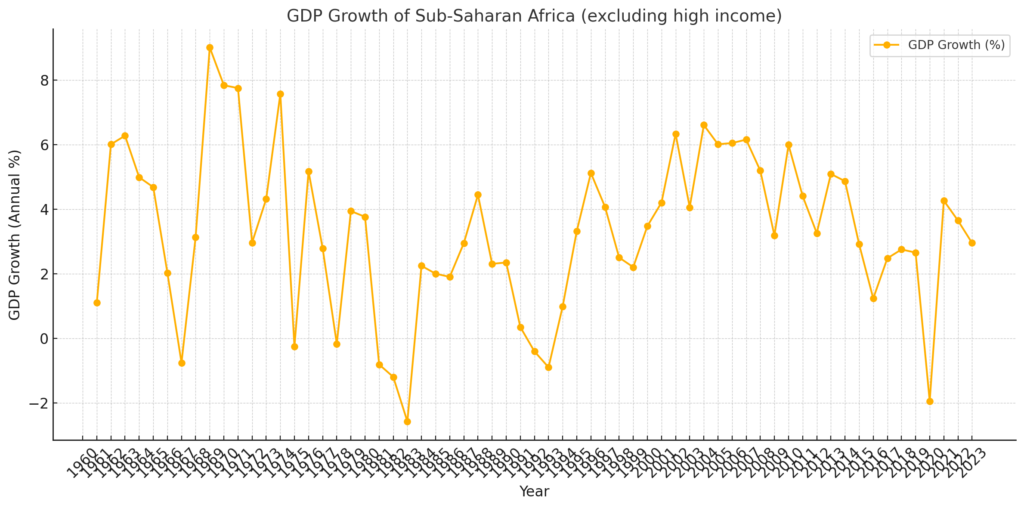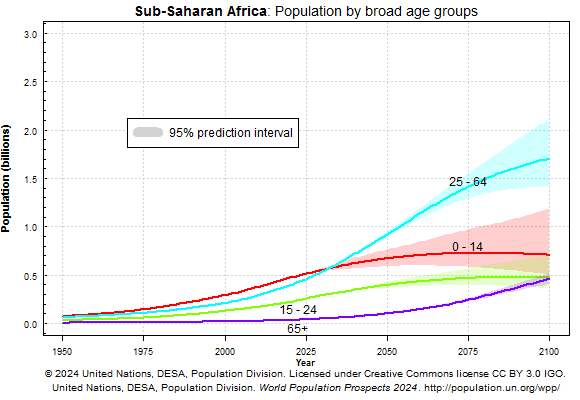Africa’s economic growth has slowed since 2010, after a strong start to the millennium. However, half of the continent’s population lives in countries that have achieved significant economic progress. With its young, fast-growing population and rich resources, Africa holds great potential to redefine its economic future. By addressing productivity challenges and fostering innovation, Africa can build a path to prosperity that benefits both the continent and the world.

A Young and Growing Population
Africa is home to the world’s youngest and fastest-growing population, with projections estimating a rise to 2.5 billion people by 2050. Rapid urbanization is also reshaping the continent. Since 2000, Africa’s urban population has grown faster than its total population, with cities expected to play a critical role in economic transformation. By 2040, Africa is projected to have 12 cities with over 10 million residents, up from two today.

Growth Trends: Mixed Performance
From 2000 to 2010, Africa’s real GDP grew by an impressive 5.1% annually, compared to just 2.5% in the previous decade. However, between 2010 and 2019, growth slowed to 3.3%. Despite this, some countries outperformed, with GDP growth exceeding 4.2%, driven by rising investment, exports, and urbanization. Others, including major economies like Nigeria, Egypt, and South Africa, experienced slower growth. Overall, the continent’s economic momentum has been uneven.
Challenges in Productivity and Poverty
Africa’s per capita income has grown by only 1.1% annually over recent decades, leaving 60% of the population in poverty. While the services sector has expanded significantly, productivity remains low. In 2019, Africa’s services sector contributed 56% of GDP but lagged behind regions like Asia and Latin America in efficiency. The agricultural sector, employing half the workforce, has seen steady progress but needs further innovation to unlock its potential.
The Role of Trade and Regional Cooperation
Africa trades more with the world than within the continent. Intra-African trade accounts for only 10% of imports and 17% of exports, compared to higher figures in regions like Southeast Asia. The African Continental Free Trade Agreement (AfCFTA) aims to change this by reducing barriers to regional trade and fostering economic integration. This initiative could boost economies of scale, improve competitiveness, and drive technological growth.
Opportunities for Transformation
Africa’s services sector is set to create 85 million new jobs by 2030, accommodating half of the continent’s new workforce. Raising productivity to levels seen in Asia could triple job creation and add $1.4 trillion to Africa’s economy. Additionally, large-scale private companies—345 firms with annual revenues over $1 billion—can play a pivotal role by driving innovation, exports, and employment.
Investing in Infrastructure and Urban Growth
As Africa’s cities grow, infrastructure investments will be essential to support economic activity and productivity. By improving transport, energy, and communication systems, urban centers can unlock new opportunities for businesses and workers alike. Secondary cities also require attention to ensure balanced regional development and reduce over-reliance on a few large urban hubs.
A Vision for the Future
Africa’s vast resources, youthful population, and growing cities position it as a potential powerhouse of the global economy. While challenges such as poverty, low productivity, and regional trade gaps remain, successful examples from leading countries and companies offer valuable lessons. By leveraging these strengths, Africa can accelerate its economic growth, improve living standards, and empower its people for a brighter future.